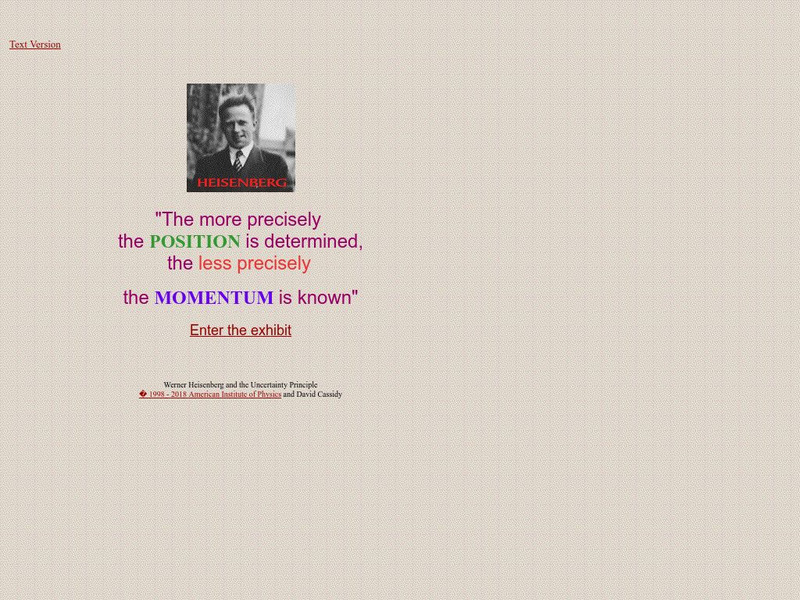Other
American Institute of Physics: Werner Heisenberg and the Uncertainty Principle
This resource is an online exhibit covering Heisenberg's physics, career, personal, and political life.
Discovery Education
Discovery Education: 3 M Young Scientist Lab: Charged Fingers
Do you have the magic touch? Watch as your finger mysteriously moves a pencil without touching it.
University of Colorado
University of Colorado: Physics 2000: Quantum Atom: Angular Momentum of an Electron
A very technical explanation of the angular momentum of an electron.
PBS
Science Odyssey: Heisenberg States Uncertainty Principle
Explains the Heisenberg Uncertainty Principle, that it is impossible to know both the momentum and position of an electron, along with describing the impact that it made upon the scientific community upon its introduction in 1927.
Dartmouth College
Dartmouth College: Chem Lab: Electrons in a Box
This site has an interactive component that allows you to change the mass, number of electrons and the length of the box and see how it affects the energy levels. Requires Java.
Libre Text
Libre Texts: Physics: Electron in a Box
What happens when an electron is trapped in a one-dimensional box? Take a look at these theories and equations applied to examples which can be illustrated this way.
Physics Classroom
The Physics Classroom: Conductors and Insulators
This online tutorial helps students understand how the transfer of charge between objects occurs more readily if two objects are made of a conducting material. Conductors allow for charge transfer through the free movement of electrons....
Concord Consortium
Concord Consortium: How Electrons Move
Being able to control the movement of electrons is fundamental for making all electronic devices work. Discover how electric and magnetic fields can be used to move electrons around. Begin by exploring the relationship between electric...
Other
Using Curly Arrows in Reaction Mechanisms
This page explains the use of curly arrows to show the movement both of electron pairs and of single electrons during organic reaction mechanisms.
Simon Fraser University
Chem1 Virtual Textbook: Movement of the Electron
Acting as a subtopic of the General Chemistry Virtual Textbook's section on Atoms and the Periodic Table, this site seeks to answer the question, "Why doesn't the electron fall into the nucleus?"








